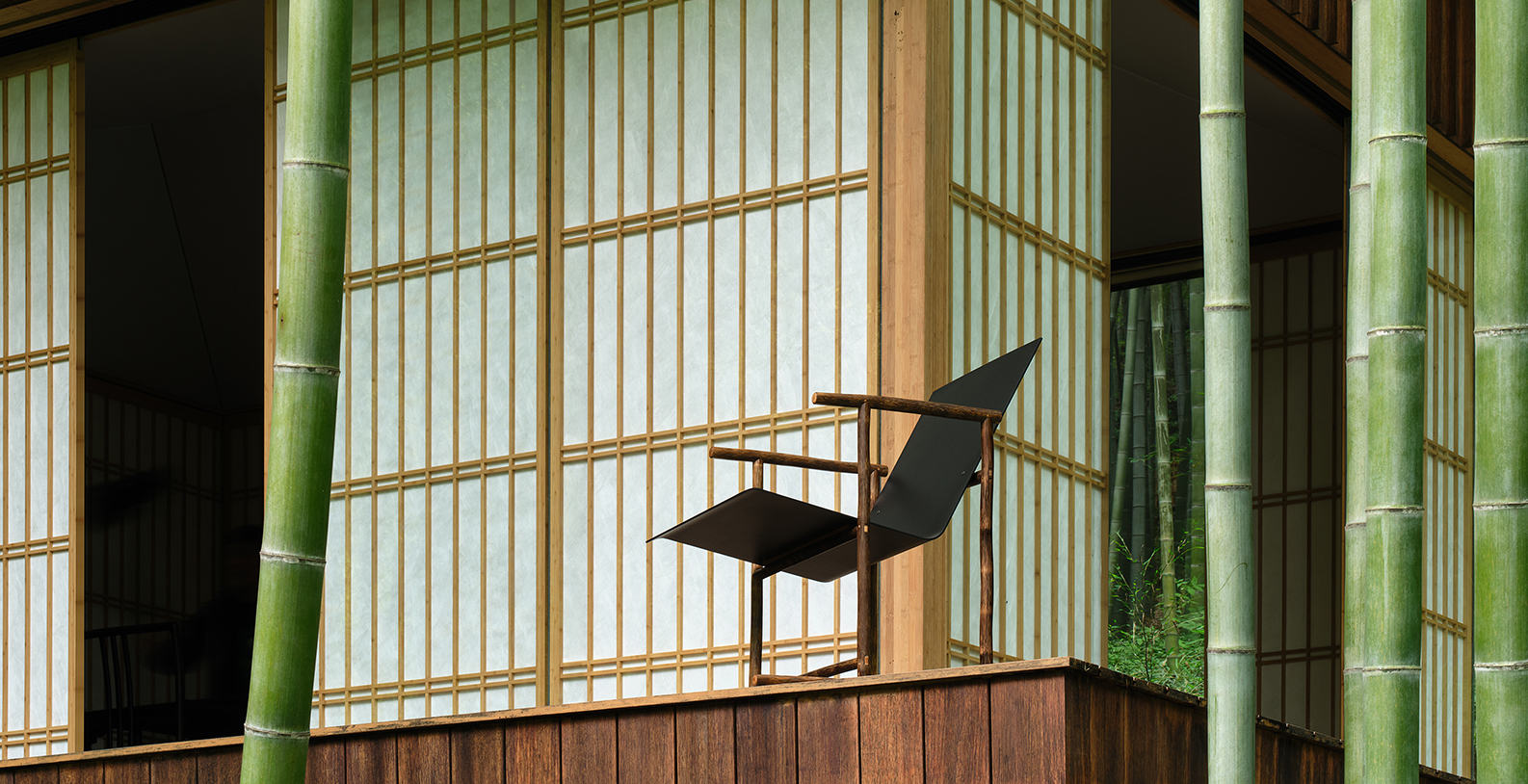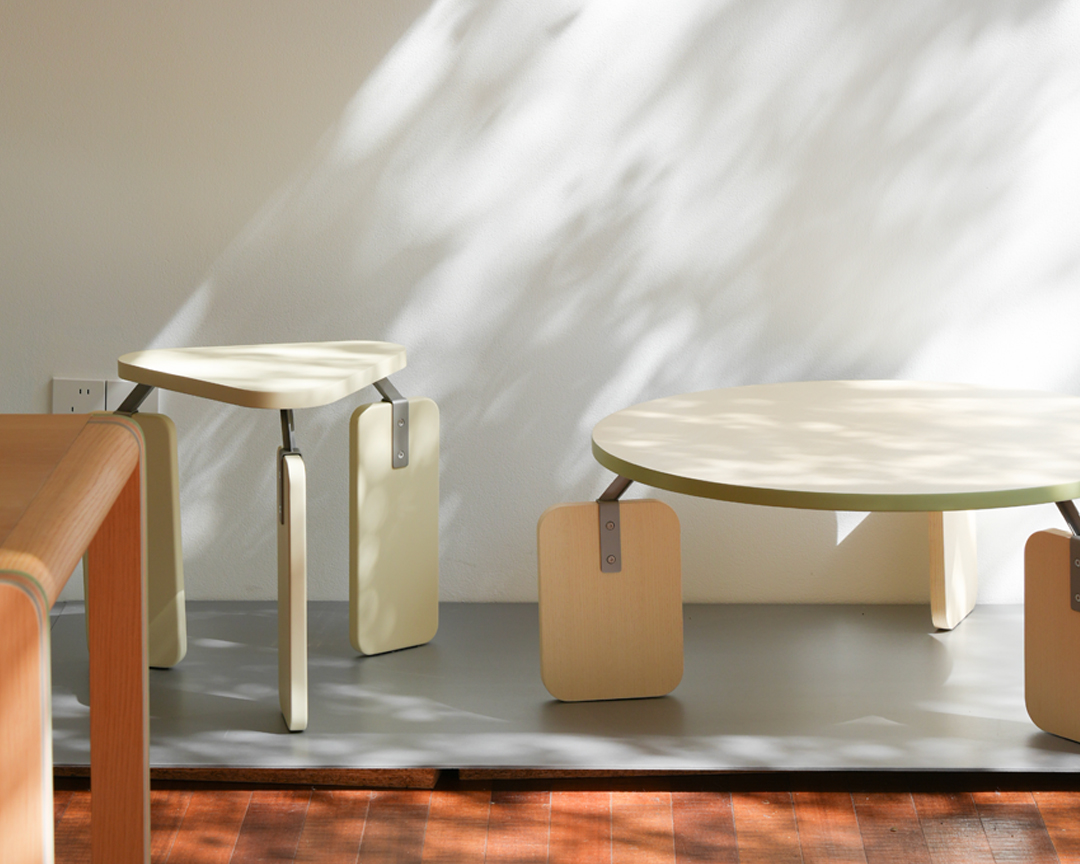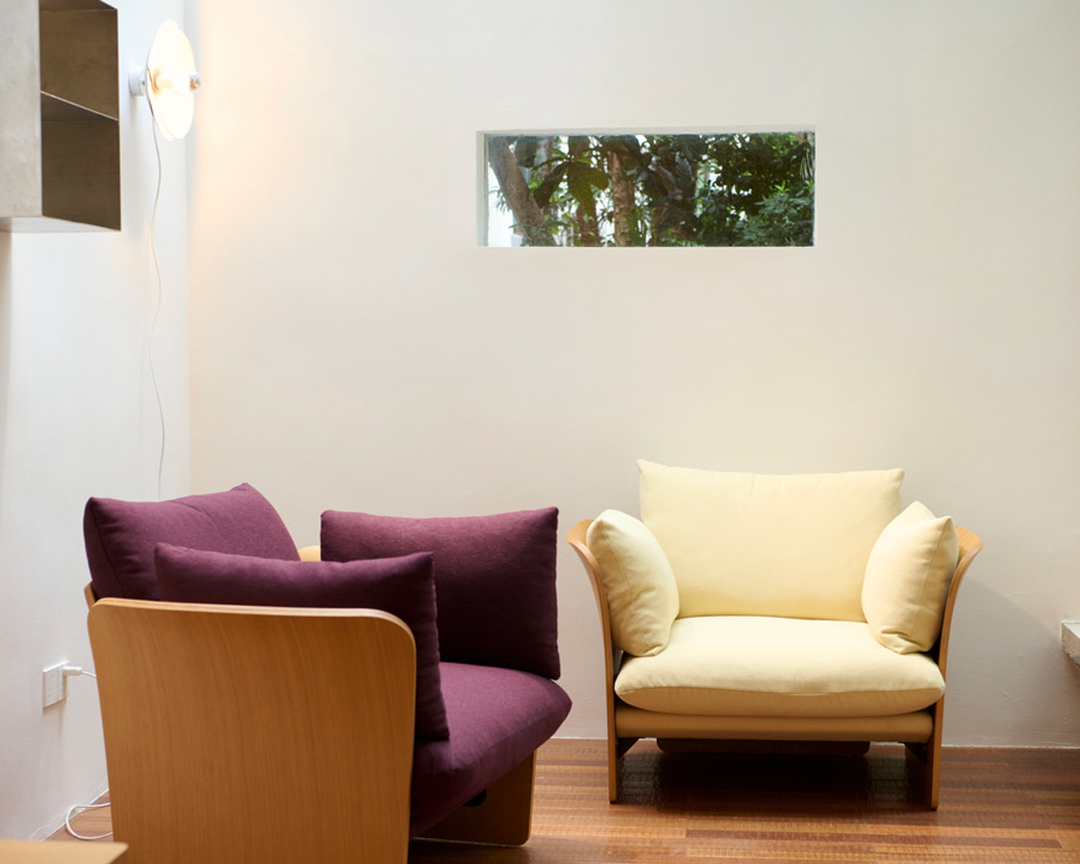
Click to download the "Jianze - Zhu Brochure 2025".
——————————
Since 2023, Jianze has embarked on an ongoing collaborative creation with Finnish designer Ville Kokkonen. During his multiple visits to China, not only was the Qiao series born, but we also initiated a research project named Zhu, exploring new possibilities of applying Chinese bamboo materials to furniture. The early results of this project were first presented in June at the Danish Design Festival (3daysofdesign).
Below, Jianze and Ville Kokkonen, who is currently in his studio in Switzerland, will share the latest thoughts on the Zhu project with you in the form of a dialogue.

01 Departure: Exploring Sustainable Chinese Bamboo
Q: Why choose bamboo as the research topic?
A: Bamboo as a material is very sustainable depending if it is used correctly. My only previous know-how of bamboo is from Japan, Yamaguchi prefecture from a factory that used and produced bamboo laminations in furniture production. Our first thoughts were to study if by using bamboo the correct way, it might be a good way to reduce the use of imported solid woods in Asia.
 Photo by Ankit Choudhary
Photo by Ankit Choudhary
China's furniture industry has a heavy reliance on imported solid wood due to market preferences and the implementation of logging bans in various places, which not only leads to high costs but also puts immense pressure on the environment during the manufacturing process. Bamboo, with its astonishing growth rate, has always been an ideal material that could potentially replace hardwood. The original intention of the Zhu project is to reduce the use of imported solid wood and instead utilize the abundant local bamboo resources to explore a more suitable and sustainable way to make bamboo into furniture.

Q: Exploring local materials in-depth seems to be one of the important methods for your product design. How did you apply this approach in the Zhu project?
A: I am very curious of the behaviors and different characteristics of materials and have acquired a quite broad understanding over the years, however, I keep learning and gathering knowledge through each project. For me it is imperative to know as much as possible so that I can apply this into the use, the design, and manufacturing processes of a product or object. This bamboo research has been an important one since it has been a rich learning process of entering deeper into the Chinese culture and behavior how bamboo has been used and applied within the culture over the centuries.
 Master Wang Rong Long and his Bamboo Art Studio
Master Wang Rong Long and his Bamboo Art Studio
02 Observations: The Cultural Application of Bamboo
Q: In the process of looking for materials and making furniture, what new cultural discoveries and experiences did you have in China?
A: I have studied the various typologies that existed in different dynasties, their most important variations in using furniture, joinery, dimensions, materials used, finishings, the reasoning for ornamentation, uses in households and within nobility etc etc. And of course I’m observing the contemporary art of living and behavior in everyday circumstances…. These notions within my own applied research work for myself to be taken as a reference and not necessarily to be used as guide or a method towards reaching a form or a shape. These are like personal notations, and memoirs of the Orient.

Bamboo has a long cultural history in China, and some types of bamboo, because of their charm and aesthetic appeal, have been processed into objects for playing with, appreciating, and collecting, known as Wen Wan. This unique way of using the material has spread from the scholars' studies to the folk, becoming a part of traditional cultural art.
In our ongoing exchanges with Hangzhou bamboo craft master Wang Rong Long, we discovered a type of solid bamboo that is distinctly different from the common hollow bamboo—Zong Zhu. This plant, which is not a bamboo species in biology, has brown leaves and a body like bamboo. After polishing, its stems have a golden luster that flows, and they are often made into fan ribs and hand-held pieces.

The varieties of bamboo used in small-scale handicrafts are numerous and have distinct characteristics. For instance, the Zi Zhu from Anhui is favored for its oily surface, while the Zi Zhu from Dongyang, Zhejiang, is more robust. Both being subspecies of spotted bamboo, the Xiang Fei Zhu fan used by Emperor Qianlong has a pattern resembling the tears of a goddess, and the Hu Die Zhu has spots like butterfly wings. The natural properties, historical stories, and cultural connotations of these bamboo materials also provide inspiration for furniture design.

03 Practice: When Wen Wan Bamboo Becomes Furniture
Q: When making furniture with bamboo, it seems that more often bamboo plywood is used rather than the original form of bamboo. How do you view this application of bamboo?
A: It was from the very beginning of this research that I thought how could we use the solid core of the bamboo, its intrinsic characteristics instead of laminated bamboo that uses a fair bit of glue. And as afterwards when we discovered the actual solid bamboo variation name…. that perhaps could be tested for furniture production, also because by using a round profile the visual character of bamboo becomes evident. As it is common knowledge that bamboo grows fast and hence it is ecological, I also think that bamboo has a an Asian aesthetic link to it, which could be tested and experimented with, to see how the audience will react, understand and appreciate it.

A lounge made from Zong Zhu in a bamboo forest cabin.
Zong Zhu represents a completely new attempt in the field of furniture design. Tested from China to Northern Europe, the solid nature of Zong Zhu makes it less likely to crack in seasonal changes, and it differs from laminated bamboo, as the finished products retain the original appearance and lightness of bamboo.
As we delve deeper into the understanding of Wen Wan Bamboo, the unique aesthetics and practicality of different bamboo species emerge before us, opening up a new imagination for home applications. Therefore, the direction of the experiment was set on Wen Wan Bamboo, and we hope to break the traditional usage patterns of this category of bamboo and explore its new uses in modern furniture design.

Q: Please introduce the research outcomes of Zhú that have been published so far from your perspective.
A: These projects are still in the early stage, however I wanted to explore different scales and variation of bamboo species by showcasing different typologies. Lounge chair as a larger lightweight structure using solid bamboo species. The lighting unit uses hollow bamboo, and the stool tests were examples of how traditional joinery could work with bamboo. Also, bamboo weaving should be studied and other possibilities with different furniture typologies.
The innovation of the Zhú project lies not only in focusing on the environmental characteristics of bamboo and reducing the impact on the environment during the production process, but also in paying attention to its natural aesthetic value and practicality. By combining modern design with traditional craftsmanship, the original texture and color of bamboo can be preserved in the furniture, creating works that are both aesthetically pleasing and practical.


04 Future: Taking Bamboo as an Action
Transforming Wen Wan Bamboo from a single-use material to a diverse material for furniture manufacturing faces many significant challenges. Historical inertia has left the research on other characteristics and applications of Wen Wan Bamboo almost blank. The demands for bamboo materials in the two applications are also quite different; the bamboo stems on the supply side are often cut too short for use as ribs in fans, or more consideration is given to the scarcity of surface patterns, as well as the appreciation and handling texture, while furniture pays more attention to practicality and stability, with very high requirements for the bamboo's moisture, density, and size.
Applying Wen Wan Bamboo in furniture enriches a new dimension of use for it, not only improving utilization rates but also broadening its application prospects in other fields. Through the application results of Wen Wan Bamboo in furniture, it may attract more people to explore the intrinsic characteristics of bamboo and bring innovation in other fields, thereby promoting optimization on the supply side, achieving more rational resource mining, matching, and even professional cultivation.

By exploring bamboo materials in an innovative way and integrating the characteristics of nature and culture into modern design, we hope that Zhú will not only be a research endeavor but also become a promotional action to improve the living environment, and in the future, enhance the entire society's attention to sustainable materials.
The next step of the Zhú project will begin to study the folk bamboo weaving craft and test the possibilities of more types of furniture. Jianze looks forward to advancing this process with you, using bamboo design to build a greener and more relaxed future.
Photos | Bea, Penn, ReyGu, White Cube Studio
Coordination | ReyGu
Text | Tan
Visuals | Zhao





